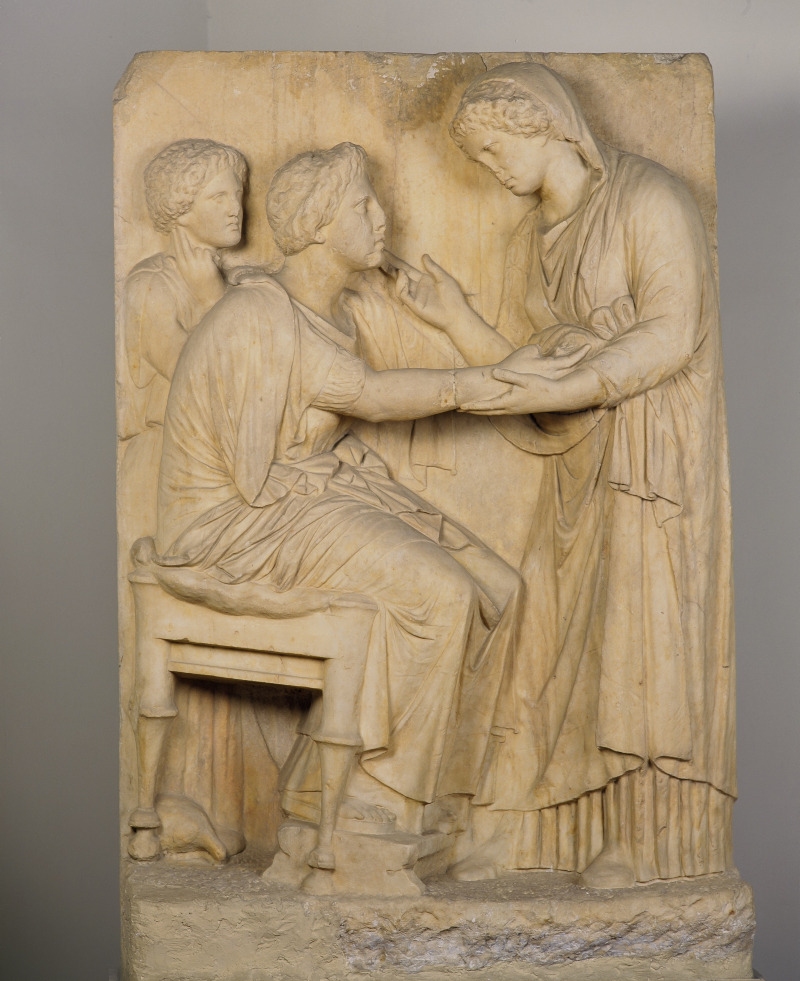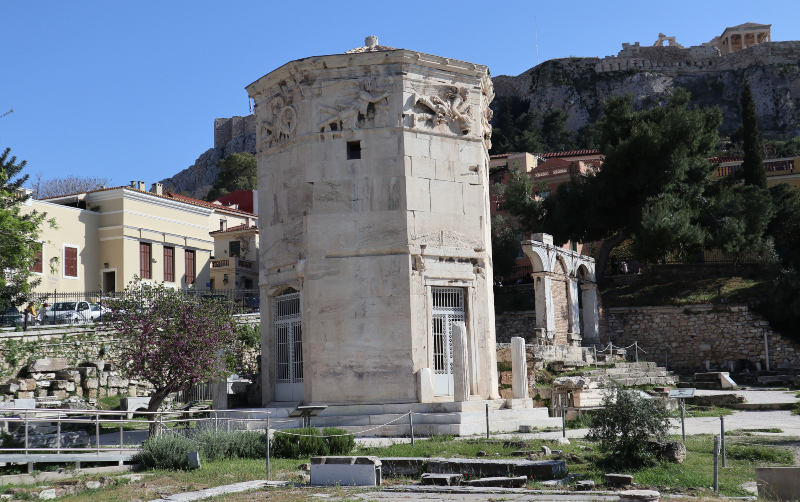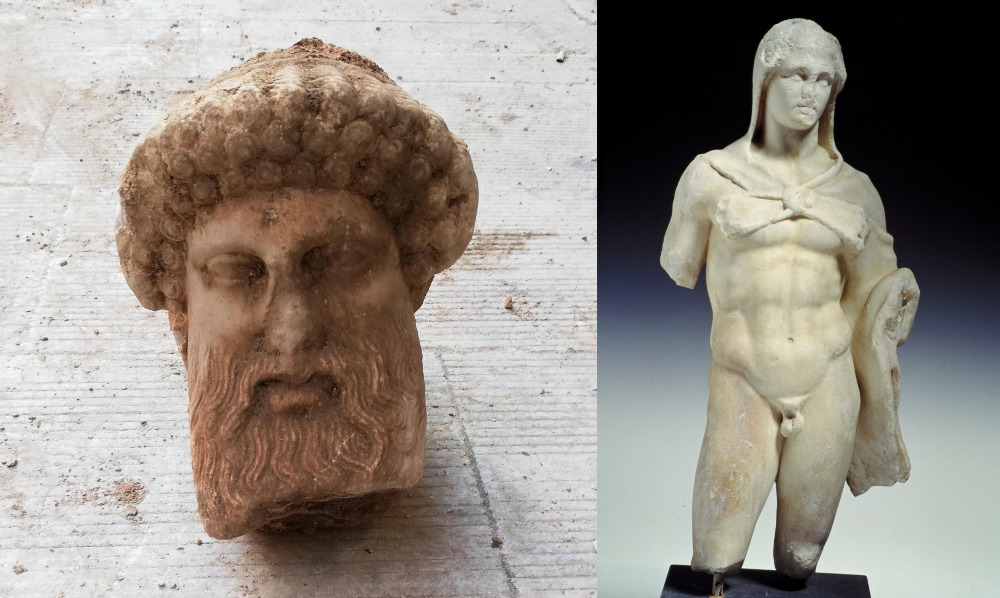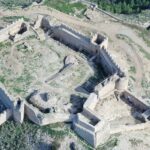In November 2020, a marble head was discovered in the centre of Athens, on Aiolou Street, during work carried out by the Municipality of Athens at a depth of 1.3 metres underground. It is an ancient statue of Hermes, an “original work of art dating from the end of the 4th century BC or the beginning of the 3rd century BC”, according to the announcement of the Greek Ministry of Culture and Sports. This is not the first time that this street yields significant archaeological finds – Aiolou actually has a long and interesting history.
Nowadays a busy, noisy street with heavy traffic, Aiolou has in fact existed as a road since the archaic period, and played a major part in the city’s history, as evidenced by excavations that began at the end of the 19th century. Its importance since the ancient times has been evidenced, among else, by the excavations carried out in Aiolou Street in the 1970s by the Athens Ephorate of Antiquities, which revealed a large part of the ancient street, and by the discovery of the Acharnian Gate of the Themistoclean Wall (the main city wall during Antiquity) in the 1980s, during the remodelling of Kotzia Square and the expansion of the National Bank building.
Opposite the site where the marble head of Hermes was discovered, near the Church of Agia Eirini (St. Irene), an extraordinary find had been excavated in 1885: a nude statue of a young Hercules, now on display at the National Archaeological Museum of Athens. It is very likely that the statuette of Hercules, dating from the end of the 4th century, adorned a passage in the sanctuary, dedicated either to Hercules or to an unknown deity.
 Tombstone ©Greek Ministry of Culture and Sports
Tombstone ©Greek Ministry of Culture and Sports
The 1970 excavations also yielded a fragment of a tombstone from the Classical period as well as a tombstone from the early Roman period. According to archaeologist Eleni Banou, Director of 3rd Prehistoric and Classical Antiquities, “a cemetery was apparently established on the kerb of the ancient road from the end of the 5th century BC, a common practice of the people of antiquity until the first Roman conquest”.
Another tombstone, now also on display at the National Archaeological Museum, found a little further west on what is now Athinas Street reveals the size of the classical cemetery. Its dates to 350-325 BC and portrays in relief the deceased, a woman sitting on a stool, extending her arm to a female relative, who tenderly holds her by the wrist with one hand and touches her face with the other.
The ancient road must have intersected with other sacred ways, judging by the fact that two other Christian churches, the Church of Panagia Chrysospiliotissa (Dormition of the Virgin Mary) and the Church of Agia Paraskevi stand on the street, north of Agia Eirini.
 The Horologion of Andronikos Kyrristos by George E. Koronaios, via Wikimedia Commons
The Horologion of Andronikos Kyrristos by George E. Koronaios, via Wikimedia Commons
When Athens became the capital of the newly founded Greek state in 1832, Aiolou Street regained its importance. It took its name from the god Aeolus, the keeper of the winds, because it starts at the site of the Horologion of Andronikos Kyrrhestes, also known as the Tower of the Winds (within the present archaeological site of the Roman Agora), a marble structure erected in 100–50 BC; the “tower” functioned as a sundial but also featured a weather vane and depicted eight wind deities.
The modern street was designed in 1833 by Gustav Eduard Schaubert and Stamatios Kleanthis–the architects assigned by the government with the task of creating a city plan– and paved with gravel in 1860. This was in fact the first cobbled street in Athens. Later, neoclassical buildings were constructed, some of which are still preserved. Following World War II and the Greek Civil War, modern apartment blocks of eight to ten storeys were built. Aiolou Street was the commercial centre of Athens for the better part the 19th and 20th centuries.
Based on a Press release by the Greek Ministry of Culture and Sports, as it appeared in Punto Grecia (Intro image: Left: Head of Hermes; Right: statue of a young Hercules ©Greek Ministry of Culture and Sports)
Read also via Greek News Agenda: Tower of the Winds: The world’s oldest “weather station”; Kerameikos, the necropolis of Athens ; Architect Ernst Ziller and his rich legacy in Greece; Arts in Greece | Exploring the Athens Metro, Greece’s Underground “Museum”
TAGS: ARCHEOLOGY | ATHENS | HERITAGE | HISTORY














